Asian pears are medium-sized fruit that is part of the species Pyrus pyrifolia. They originate from East Asia, unlike European pears or Korean pears.
They are frequently used in traditional Chinese and Japanese cuisine and have become increasingly popular in Western countries.

⬇️ Table of Contents
- 20th Century Asian Pear
- Atago Asian Pear
- Brown Ya Pear
- Chojuro Asian Pear
- Drippin' Honey Asian Pear
- Green Ya Pear
- Hamese Asian Pear
- Hosui Asian Pear
- Ichiban Nashi Japanese Pear
- Kikisui Asian Pear
- Korean Giant Korean Pear
- Kosui Asian Pear
- Mishirasu Asian Pear
- Niitaka Asian Pear
- Olympic Giant Asian Pear
- Ooharabeni Asian Pear
- Reddy Robin Asian Pear
- Red Ya Pear
- Seuri Asian Pear
- Shinseiki Asian Pear
- Shinsui Asian Pear
- Tsu Li Chinese Pear
- White Ya Pear
- Yellow Ya Pear
- Yoinashi Asian Pear
20th Century Asian Pear

The 20th Century Asian Pear, also known as "Nijisseiki," is one of the most popular types of Asian pear varieties.
This Japanese pear is a hybrid developed in the early 1900s. It features a round shape with smooth, light yellow skin and crisp white flesh, giving it an apple-like texture, hence the nickname 'apple pear'.
Known for its sweet, slightly acidic flavor, the 20th-century Asian Pear is a favorite fruit in Japan and has gained popularity in Western countries as well.
Highlights:
- Origin: Japan, early 1900s.
- Skin: Smooth, light yellow.
- Flesh: Crisp, white.
- Flavor: Sweet, slightly acidic.
- Harvest: Mid-August.
- Storage: Up to three months at room temperature.
Additional Information: This pear variety is excellent for fresh eating due to its juicy, apple-like texture. It is also used in desserts and salads.
The trees are known for their high yield and adaptability to various climates, making them a popular choice for home gardens and orch
Atago Asian Pear
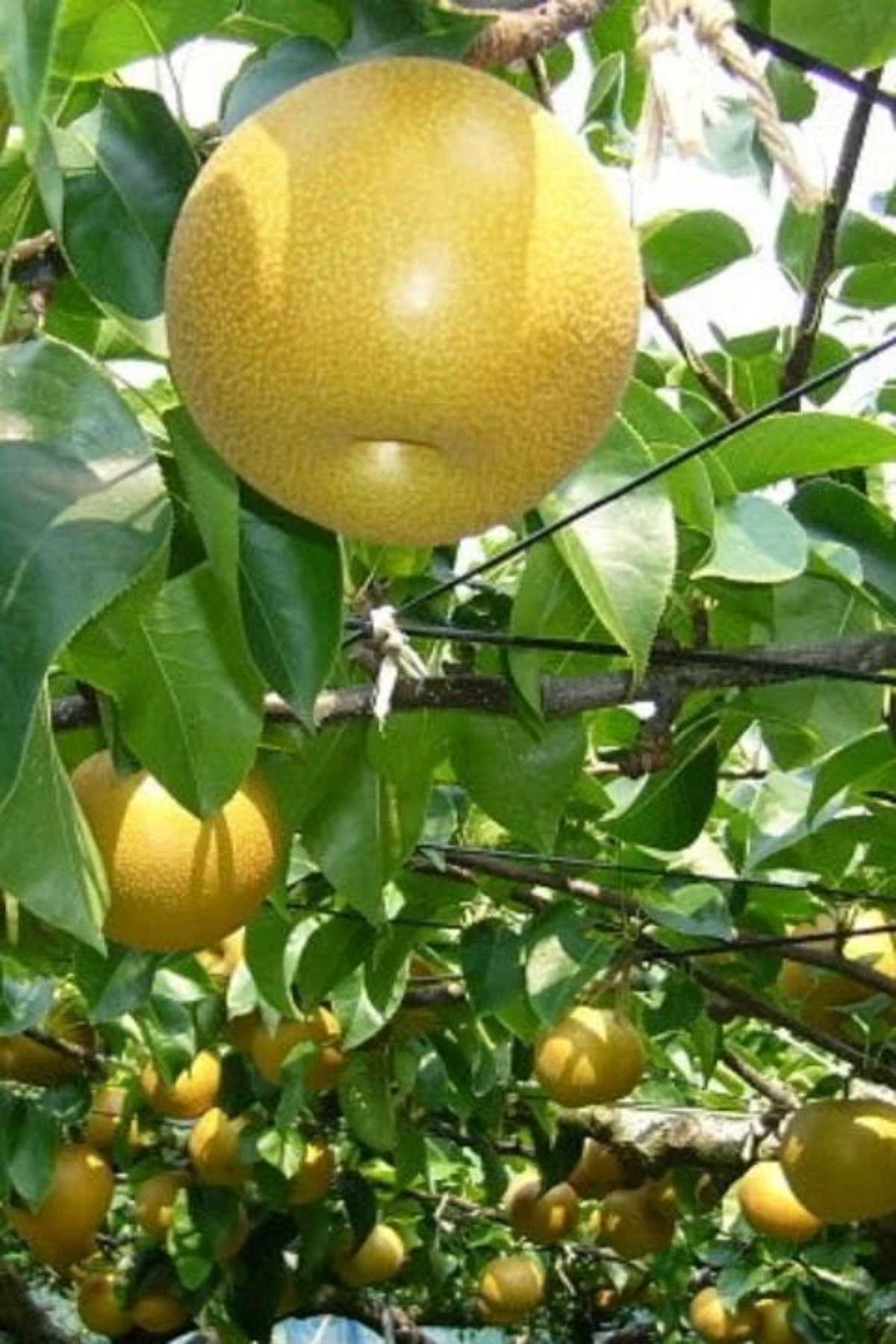
The Atago Asian Pear is a large, round fruit with a unique sweet and slightly tangy flavor.
Originating from Japan, this variety has thick, yellow-brown skin and juicy, crisp flesh. It is one of the largest Asian pear varieties, often weighing up to a pound or more.
Highlights:
- Origin: Japan.
- Skin: Thick, yellow-brown.
- Flesh: Juicy, crisp.
- Flavor: Sweet, slightly tangy.
- Harvest: Early spring.
- Storage: Several months. Atago Asian Pears ripen on the tree and are best eaten when firm and crispy.
Additional Information: The Atago Asian Pear is known for its long shelf life and can be stored for extended periods without losing its flavor or texture. This makes it an excellent choice for export and long-term storage. It is often eaten fresh, but it can also be used in cooking
Brown Ya Pear
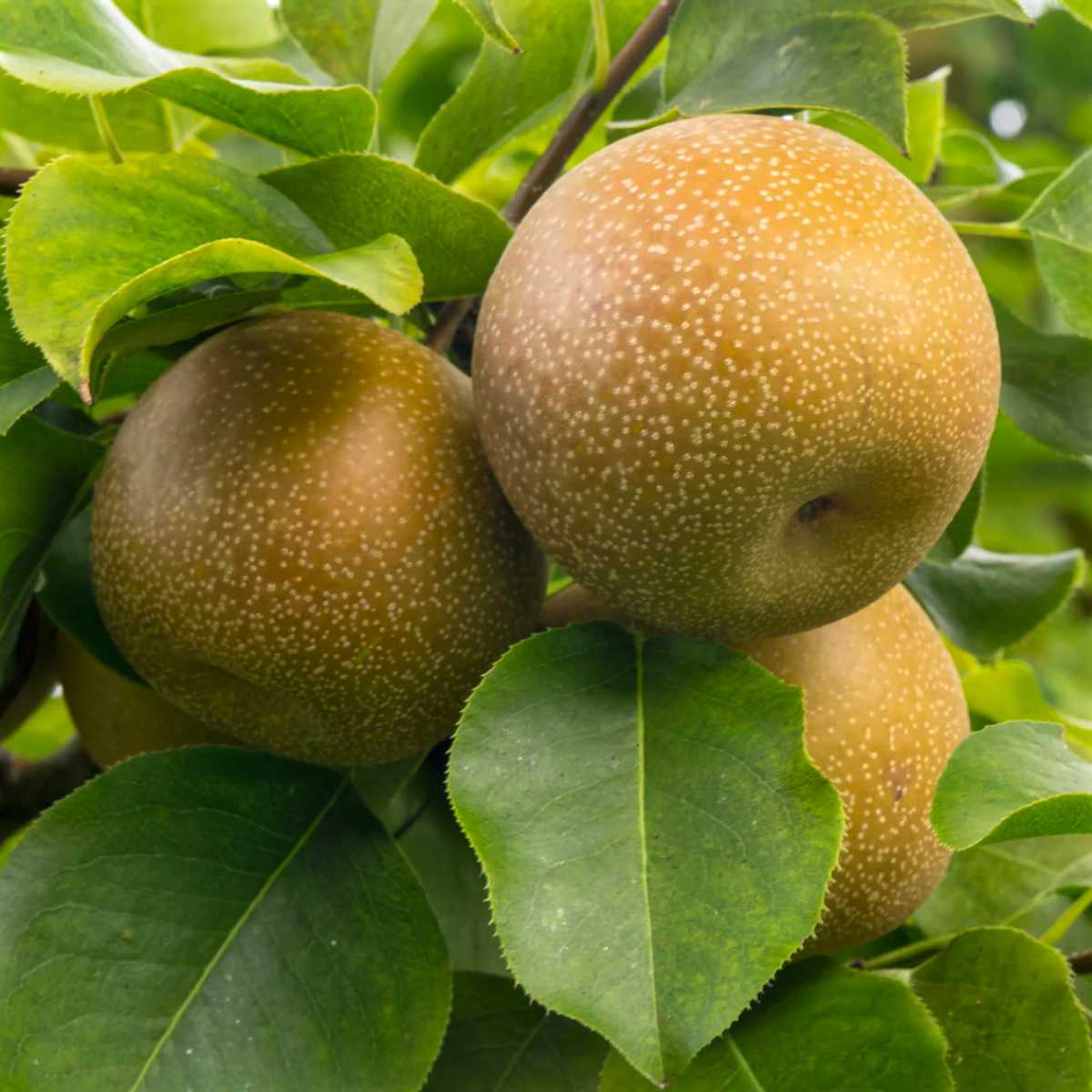
The Brown Ya Pear, also known as a sand pear, is a Chinese pear with a firm texture and mildly sweet flavor. It has a distinct brown skin and is often referred to as a sand pear. The flesh is crisp and juicy, making it a popular choice for fresh consumption and culinary uses.
Highlights:
- Origin: China.
- Skin: Brown.
- Flesh: Crisp, juicy.
- Flavor: Mildly sweet.
- Harvest: Fall.
- Storage: Extended periods at room temperature.
Additional Information: Brown Ya Pears are often used in traditional Chinese cooking and can be found in various savory and sweet dishes.
The firm texture makes them ideal for poaching, baking, and even grilling. They are also high in fiber and vitamin C, contributing to a healthy diet. Some Chinese varieties, like the Brown Ya Pear, are hybrids
Chojuro Asian Pear
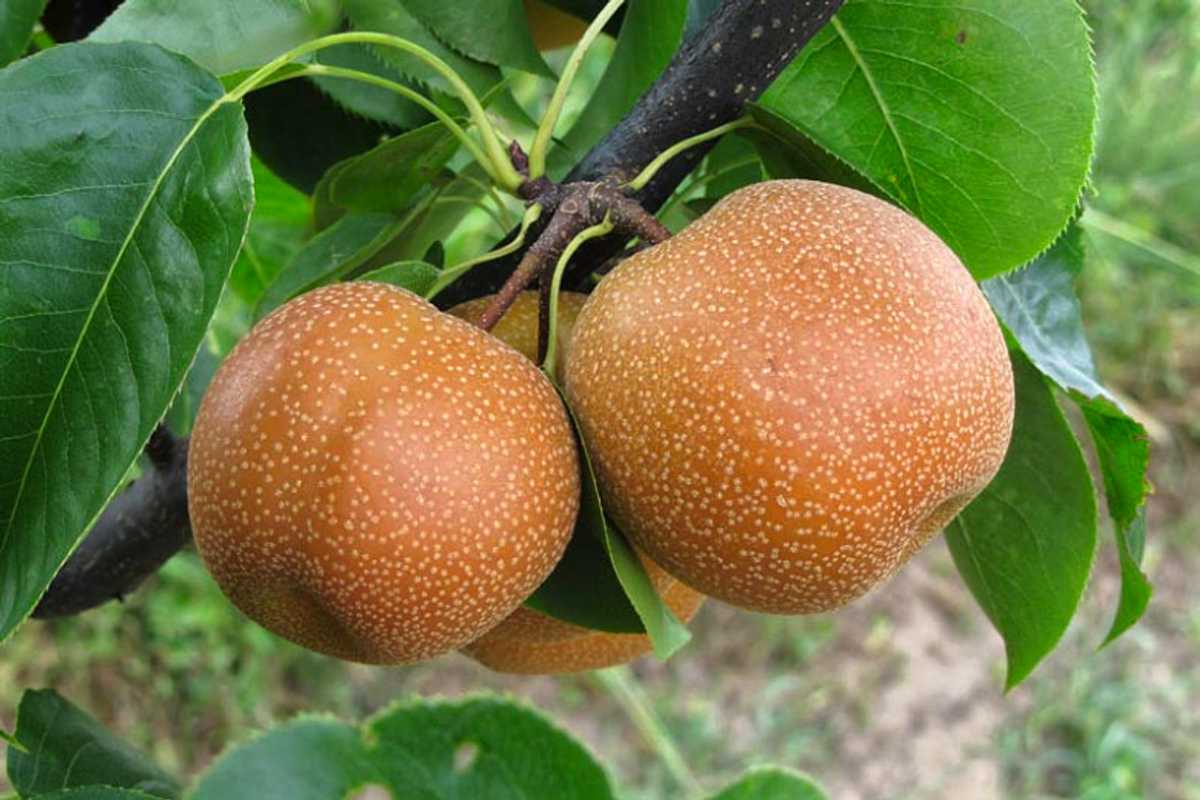
The Chojuro Asian Pear is a beloved Japanese pear variety known for its rich, caramel-like flavor. This round pear has a russeted, bronze skin and crisp, juicy flesh. It is often considered one of the best-tasting Asian pears.
Highlights:
- Origin: Japan, early 20th century.
- Skin: Russeted, bronze.
- Flesh: Crisp, juicy.
- Flavor: Rich, caramel-like.
- Harvest: Late summer.
- Storage: Several months.
Additional Information: Chojuro pears are highly prized for their unique flavor and are often eaten fresh or used in gourmet recipes.
The trees are known for their resilience and can withstand various environmental conditions, making them a reliable choice for growers. The Chojuro Asian Pear has a shape that resembles a European pear, with its round and slightly elongated form.
Drippin' Honey Asian Pear

The Drippin' Honey Asian Pear is a sweet, golden brown variety that lives up to its name. Known for its honey-like flavor and crisp texture, this pear is a favorite among pear enthusiasts. The flesh is juicy and aromatic, making it an excellent choice for fresh eating.
Highlights:
- Origin: Japan, 1970s.
- Skin: Golden brown.
- Flesh: Juicy, aromatic.
- Flavor: Sweet, honey-like.
- Harvest: Early fall.
- Storage: Up to three months.
Additional Information: This variety is particularly popular in the United States and is often used in fresh and cooked dishes. Its natural sweetness makes it a great addition to desserts, salads, and savory recipes. The trees are hardy and produce abundant fruit. In the United States, Asian pears like the Drippin' Honey are also known as apple pears.
Green Ya Pear
Green Ya Pear is a Chinese pear with a distinct green skin and sweet-tart flavor. Known for its firm texture and crisp bite, this pear is a popular fruit in China and beyond. The flesh is juicy and slightly grainy, making it a refreshing snack.
Highlights:
- Origin: China.
- Skin: Green.
- Flesh: Juicy, slightly grainy.
- Flavor: Sweet-tart.
- Harvest: Late summer.
- Storage: Several months.
Additional Information: Green Ya Pears are often enjoyed fresh, but they can also be used in various culinary applications, such as baking and poaching.
They are high in vitamins and minerals, including vitamin C and potassium, making them a nutritious addition to any diet. In the United States, Asian pears like the Green Ya Pear are also known as Korean pears.
Hamese Asian Pear
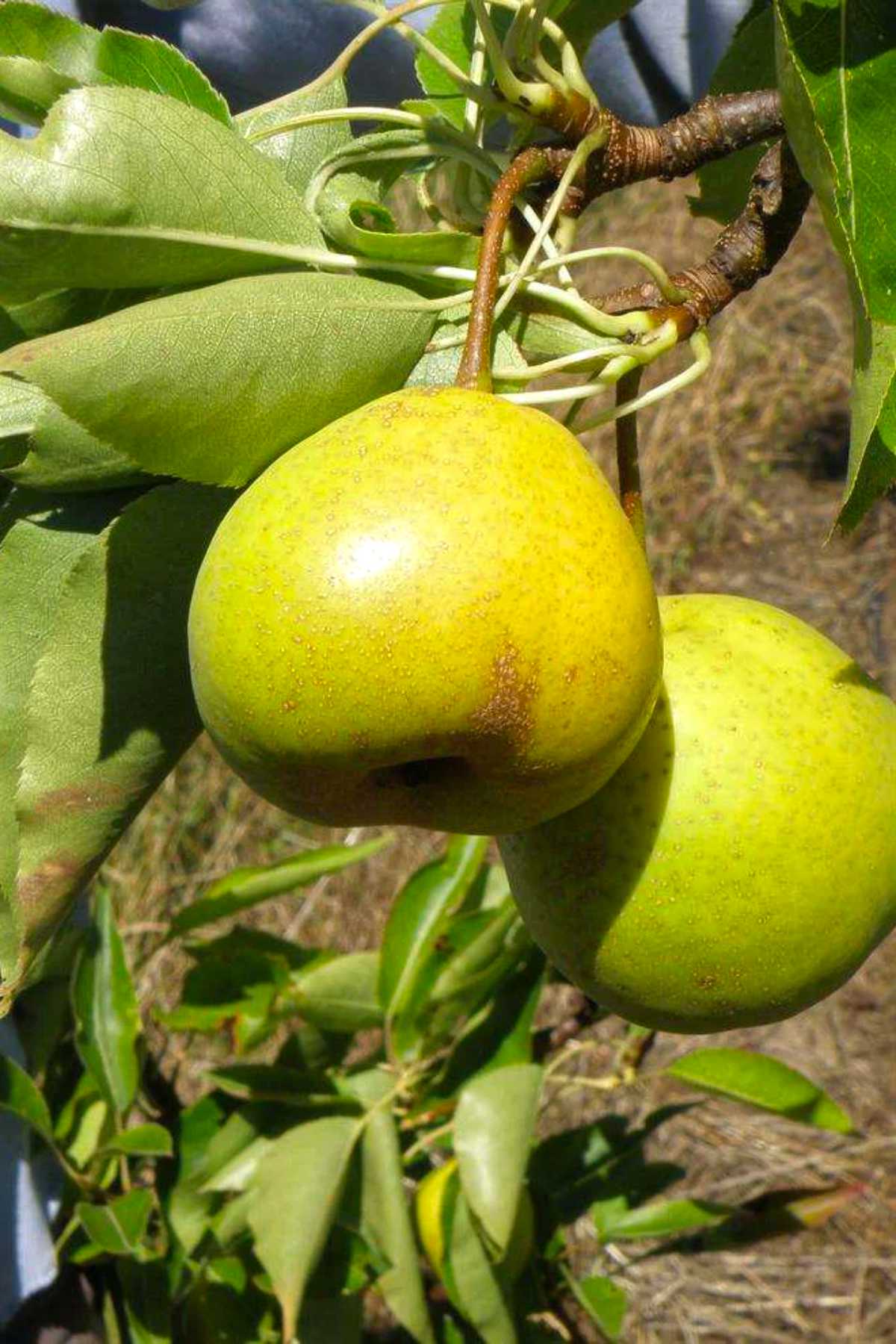
The Hamese Asian Pear is a small, round fruit with a sweet flavor and crisp texture. This variety has a yellow-green skin and white flesh, making it a visually appealing and delicious fruit. It is often enjoyed fresh but can also be used in culinary applications.
Highlights:
- Origin: East Asia.
- Skin: Yellow-green.
- Flesh: White.
- Flavor: Sweet.
- Harvest: Mid-August.
- Storage: Up to three months.
Additional Information: Hamese Asian Pears are known for their delightful sweetness and are a favorite for fresh eating. They can also be used in salads, desserts, and as a garnish.
The trees are relatively easy to grow and produce a generous amount of fruit. Hamese Asian Pear trees are known for their high yield and adaptability to various climates, making them a popular choice for home gardens and orchards.
Hosui Asian Pear

The Hosui Asian Pear is a popular Japanese variety known for its sweet flavor and crisp texture. This large, round pear has a golden-brown skin and juicy flesh. It is often considered one of the most delicious Asian pears available.
Highlights:
- Origin: Japan.
- Skin: Golden-brown.
- Flesh: Juicy.
- Flavor: Sweet.
- Harvest: Late summer.
- Storage: Several months.
Additional Information: Hosui pears are ideal for fresh eating, thanks to their sweet and juicy nature. They are also used in various recipes, from salads to baked goods.
The trees are robust and productive, making them a favorite among growers. The Hosui Asian Pear is part of the Pyrus pyrifolia pear tree species, which is native to East Asia and cultivated in various regions around the world.
Ichiban Nashi Japanese Pear
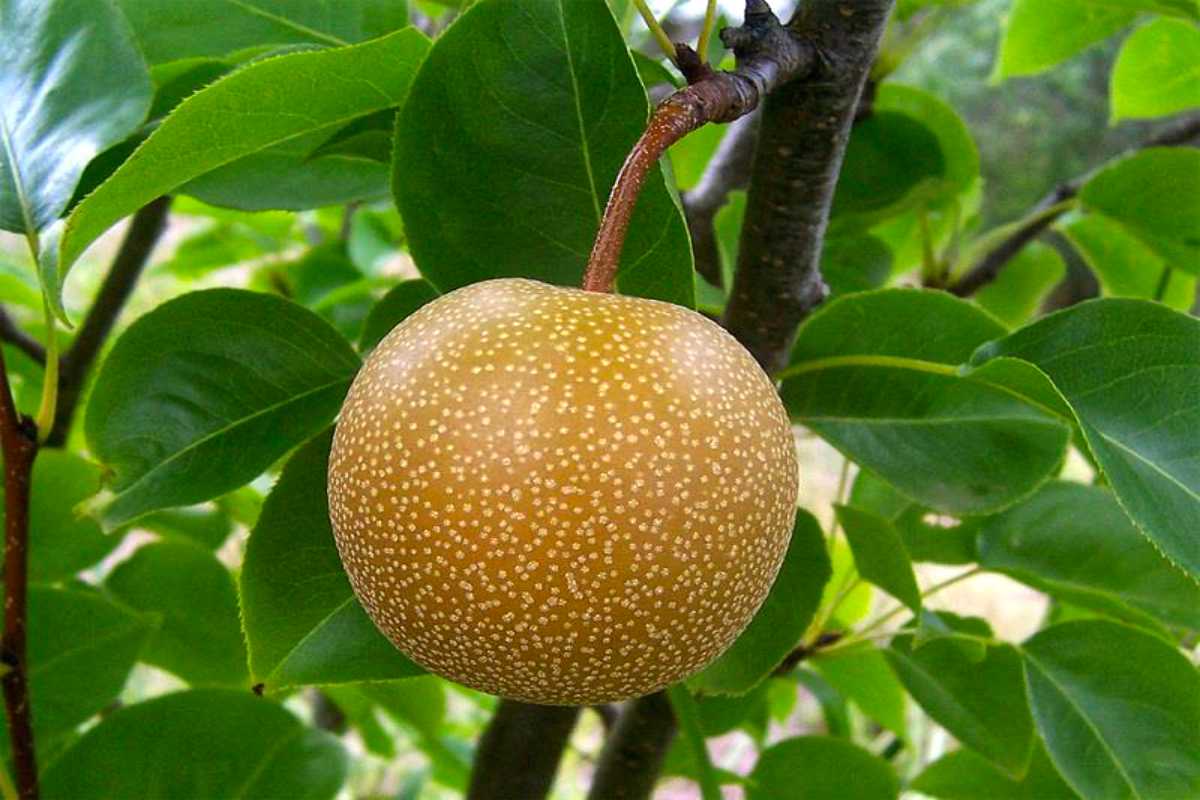
The Ichiban Nashi Asian Pear is a Japanese variety known for its sweet flavor and crisp texture. This round pear has a light greenish-yellow skin and juicy white flesh. It is a popular fruit in Japan and is often enjoyed fresh.
Highlights:
- Origin: Japan.
- Skin: Light greenish-yellow.
- Flesh: Juicy, white.
- Flavor: Sweet.
- Harvest: Early fall.
- Storage: Several months.
Additional Information: Ichiban Nashi pears are perfect for fresh eating due to their juicy and sweet nature. They can also be used in various culinary applications, such as salads and desserts.
The trees are known for their reliability and high yield. Unlike western pears, Ichiban Nashi Asian Pears are best eaten when firm and crispy, as they do not soften when kept in storage.
Kikisui Asian Pear
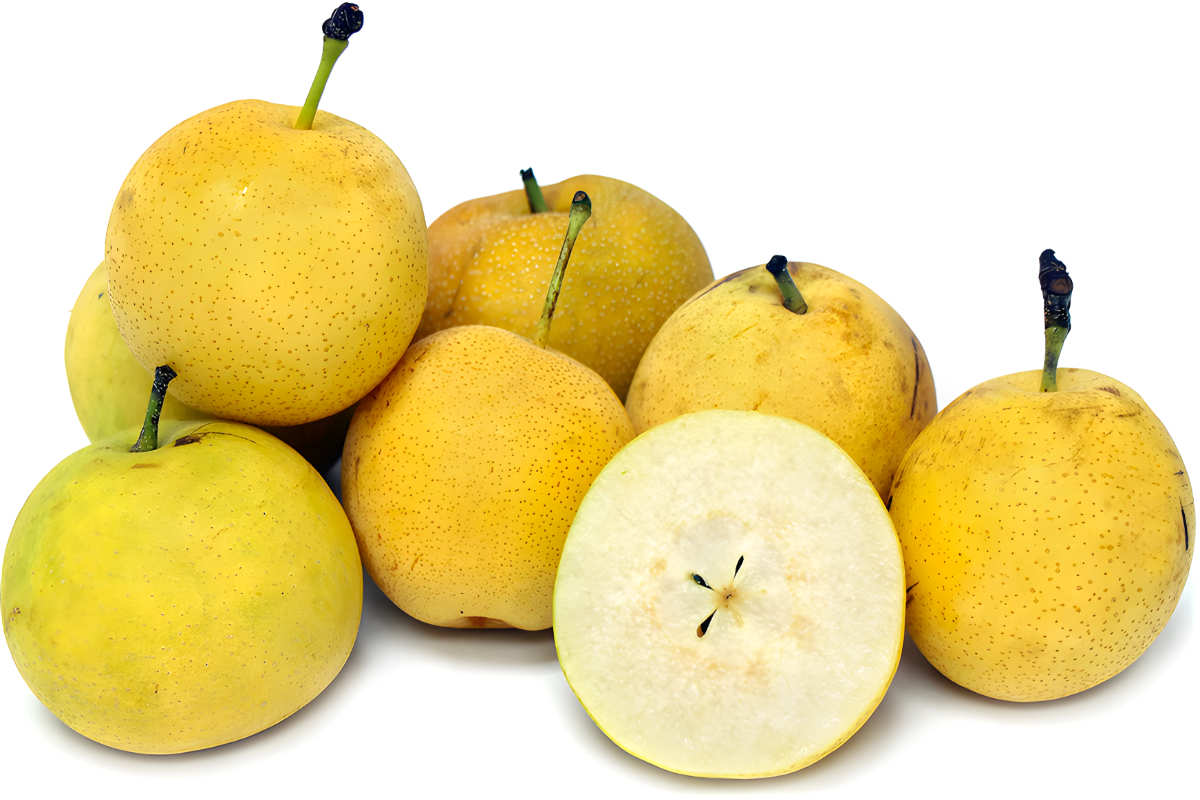
The Kikisui Asian Pear is a Japanese variety known for its sweet flavor and crisp texture. This small, round pear has yellow-green skin and juicy white flesh. It is a popular fruit in Japan and is often enjoyed fresh.
Highlights:
- Origin: Japan.
- Skin: Yellow-green.
- Flesh: Juicy, white.
- Flavor: Sweet.
- Harvest: Mid-August.
- Storage: Up to three months.
Additional Information: Kikisui pears are highly valued for their sweet taste and crisp texture. They are excellent for fresh consumption and can also be used in various recipes.
The trees are hardy and produce a generous amount of fruit each season. In the United States, Asian pears like the Kikisui are also known as Korean pears.
Korean Giant Korean Pear
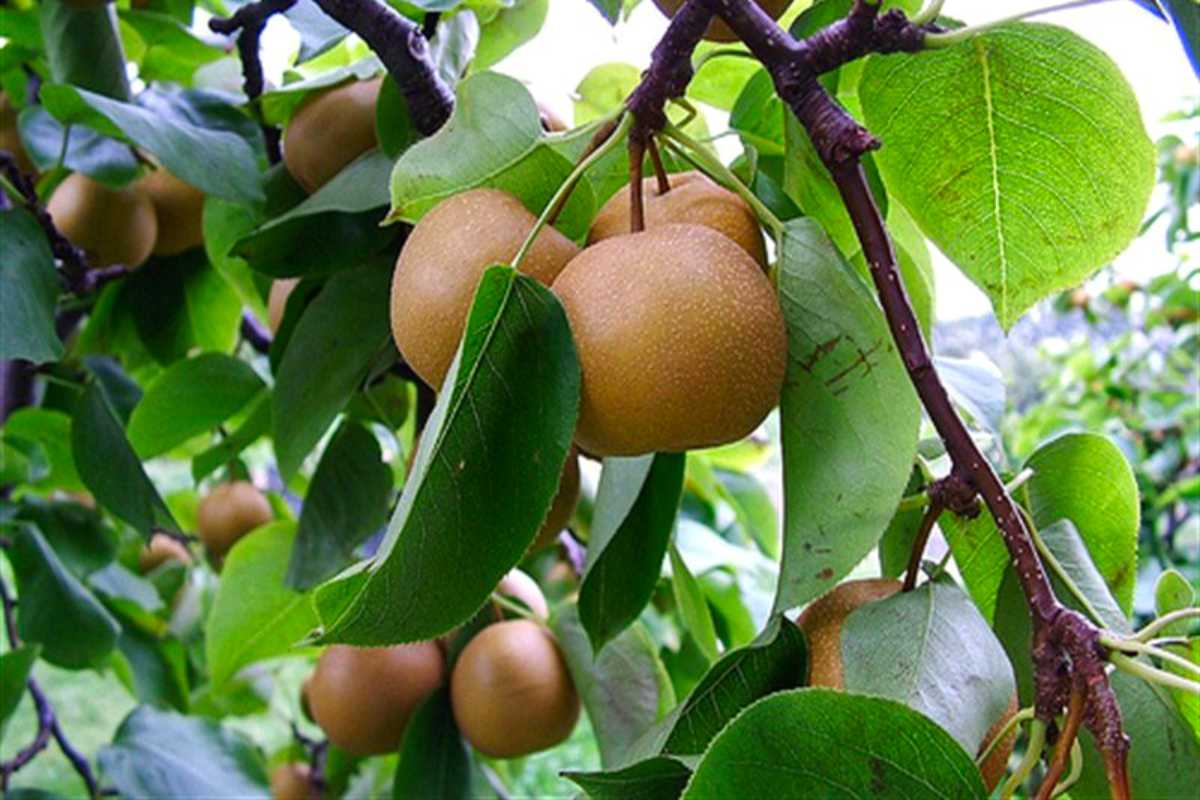
The Korean Giant Asian Pear is a large, round fruit known for its sweet flavor and crisp texture. This variety has golden-brown skin and juicy white flesh. It is one of the largest Asian pear varieties, often weighing up to a pound or more.
Highlights:
- Origin: Korea.
- Skin: Golden-brown.
- Flesh: Juicy, white.
- Flavor: Sweet.
- Harvest: Early fall.
- Storage: Several months.
Additional Information: Korean Giant pears are known for their large size and delicious taste. They are often eaten fresh, but they can also be used in cooking and baking.
The trees are robust and can thrive in various climates, making them a popular choice for growers. Asian pears, including the Korean Giant, were introduced to the United States by Chinese laborers in the 1850s and are often associated with prosperity and good fortune in China.
Kosui Asian Pear

The Kosui Asian Pear is a Japanese variety known for its sweet flavor and crisp texture. This round pear has a greenish-yellow skin and juicy white flesh. It is a popular fruit in Japan and is often enjoyed fresh.
Highlights:
- Origin: Japan.
- Skin: Greenish-yellow.
- Flesh: Juicy, white.
- Flavor: Sweet.
- Harvest: Mid-August.
- Storage: Up to three months.
Additional Information: Kosui pears are ideal for fresh eating due to their sweet and juicy nature. They can also be used in various culinary applications, such as salads and desserts. The trees are easy to grow and produce abundant fruit.
Mishirasu Asian Pear
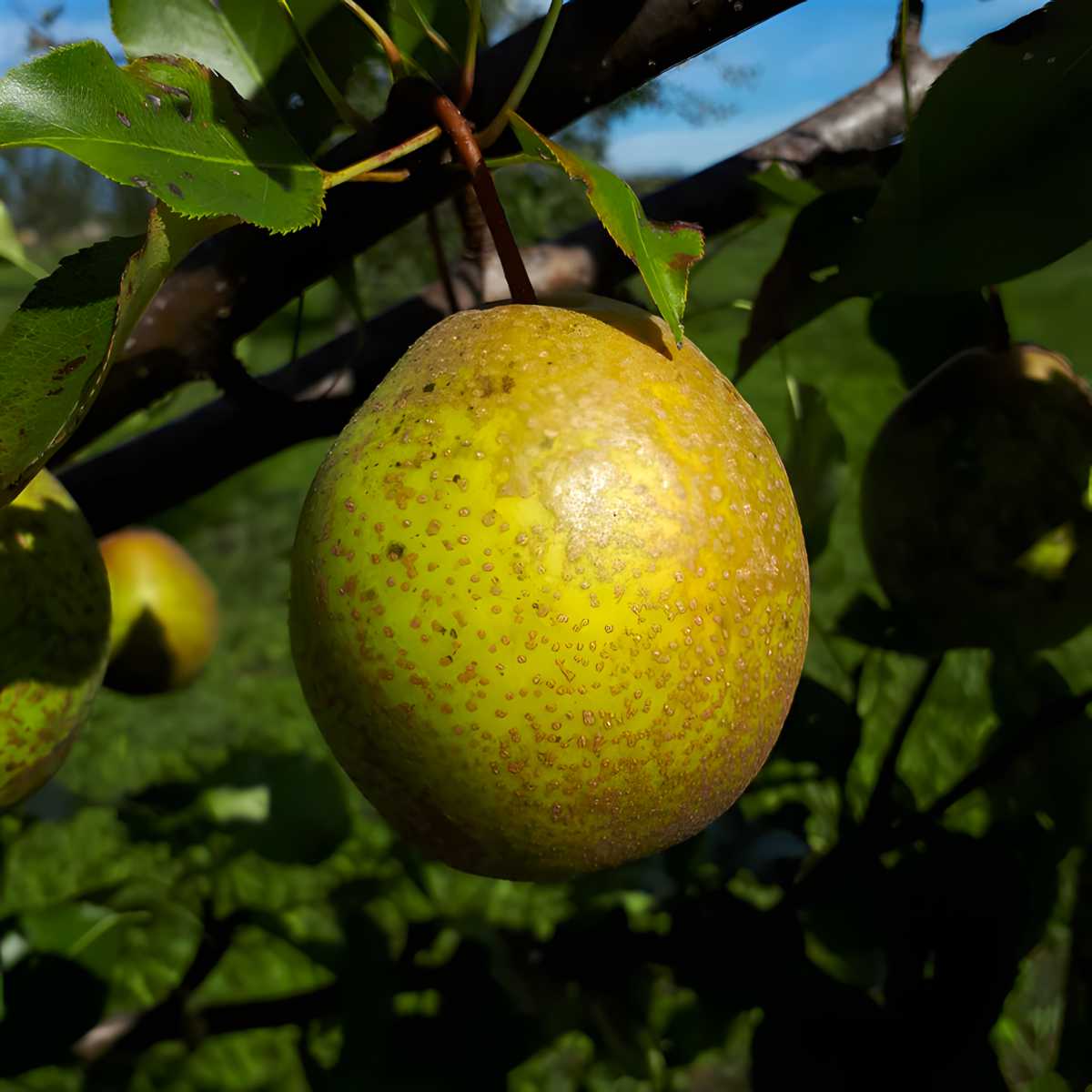
The Mishirasu Asian Pear is a large, round fruit with a sweet flavor and crisp texture. This variety has yellow-green skin and juicy white flesh. It is often enjoyed fresh but can also be used in culinary applications.
Highlights:
- Origin: East Asia.
- Skin: Yellow-green.
- Flesh: Juicy, white.
- Flavor: Sweet.
- Harvest: Late summer.
- Storage: Several months.
Additional Information: Mishirasu pears are perfect for fresh eating due to their sweet and juicy nature. They can also be used in various culinary applications, such as baking and poaching. The trees are known for their high yield and adaptability to different climates.
Niitaka Asian Pear

The Niitaka Asian Pear is a large, round fruit known for its sweet flavor and crisp texture. This variety has yellow-green skin and juicy white flesh. It is a popular fruit in Japan and is often enjoyed fresh.
Highlights:
- Origin: Japan.
- Skin: Yellow-green.
- Flesh: Juicy, white.
- Flavor: Sweet.
- Harvest: Early fall.
- Storage: Several months.
Additional Information: Niitaka pears are ideal for fresh eating due to their sweet and juicy nature. They can also be used in various culinary applications, such as salads and desserts. The trees are easy to grow and produce abundant fruit.
Olympic Giant Asian Pear
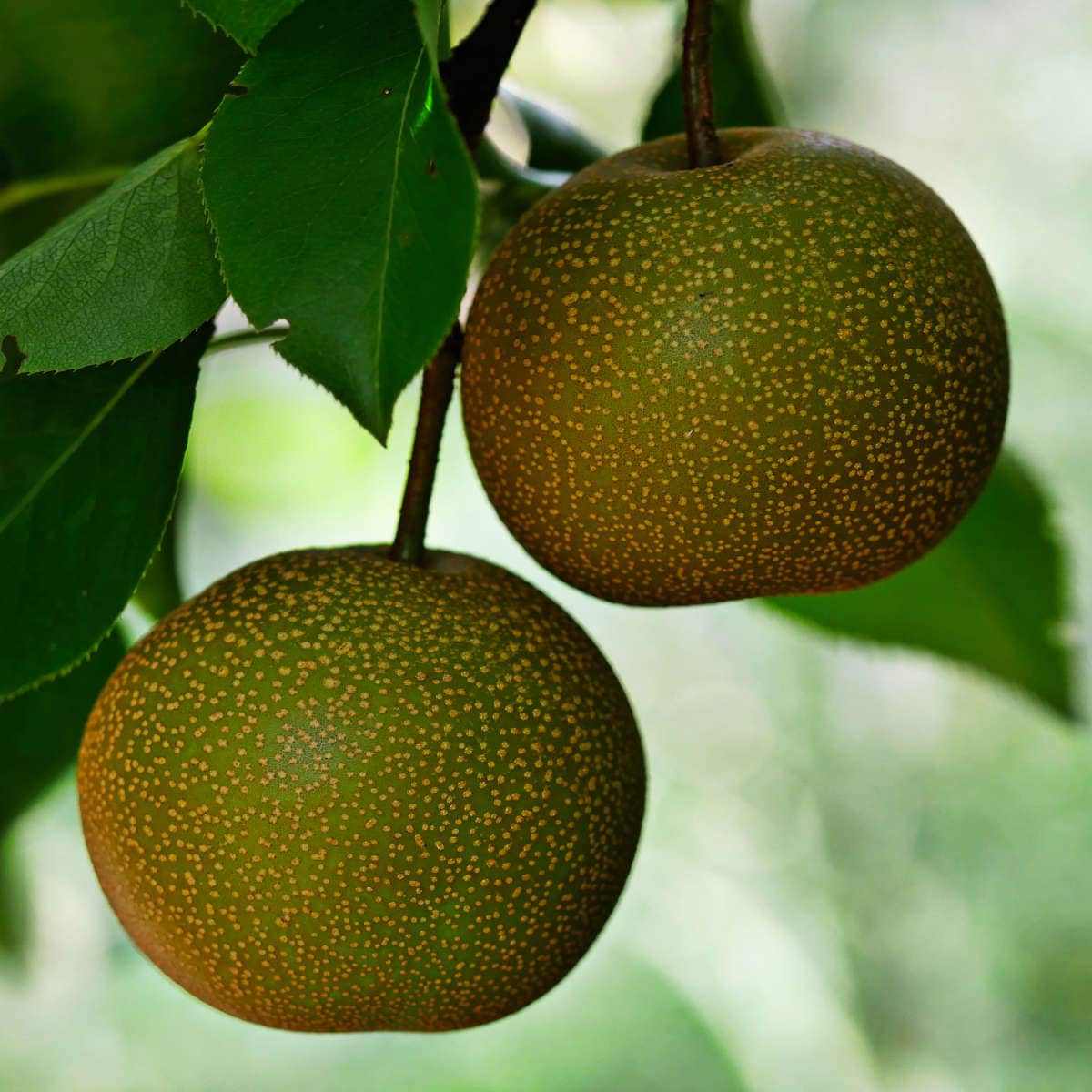
The Olympic Giant Asian Pear is a large, round fruit known for its sweet flavor and crisp texture. This variety has a greenish-yellow skin and juicy white flesh. It is one of the largest Asian pear varieties, often weighing up to a pound or more.
Highlights:
- Origin: East Asia.
- Skin: Greenish-yellow.
- Flesh: Juicy, white.
- Flavor: Sweet.
- Harvest: Late summer.
- Storage: Several months.
Additional Information: Olympic Giant pears are known for their large size and delicious taste. They are often eaten fresh, but they can also be used in cooking and baking. The trees are robust and can thrive in various climates, making them a popular choice for growers.
Ooharabeni Asian Pear
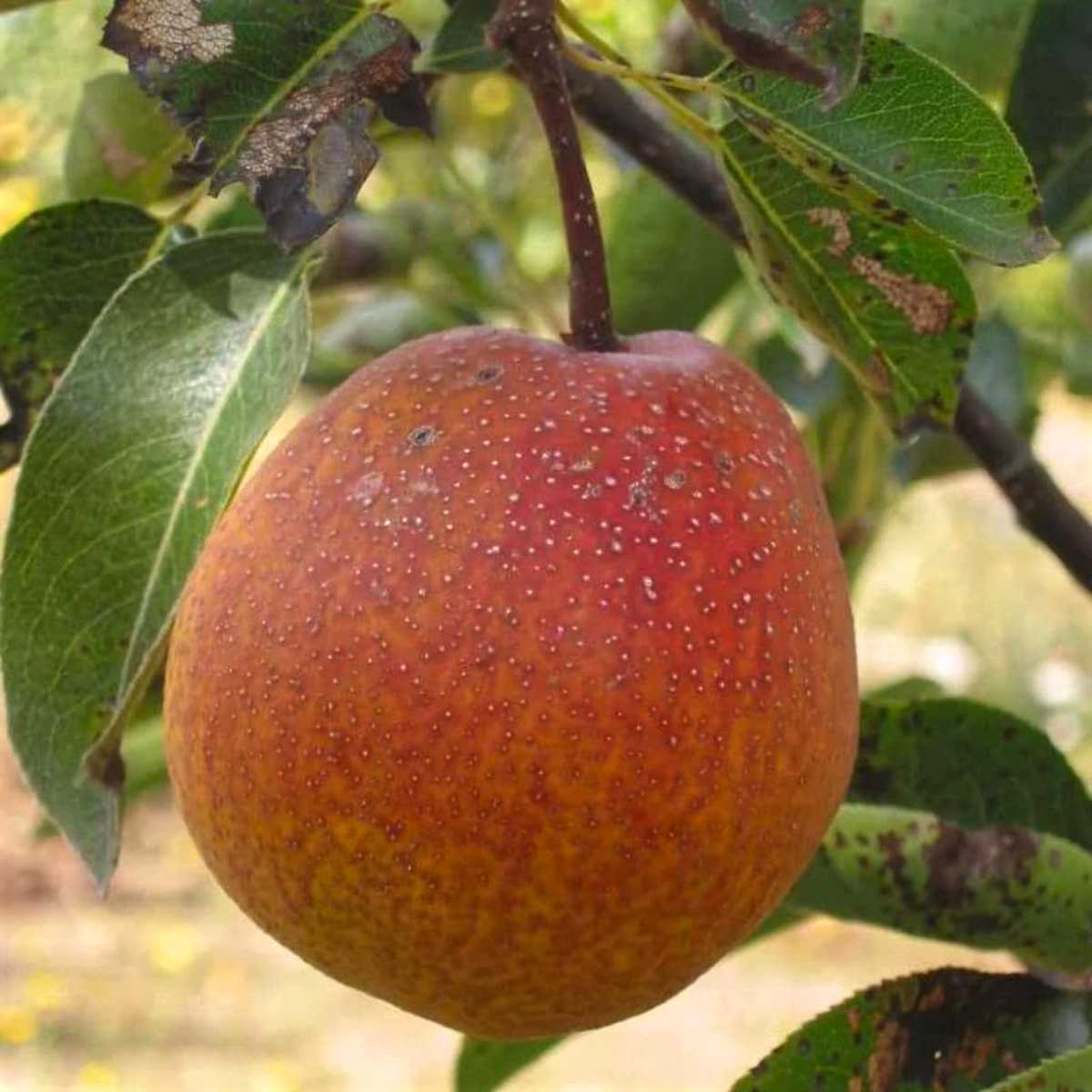
The Ooharabeni Asian Pear is a unique variety with a sweet flavor and crisp texture. It has reddish-brown skin and juicy white flesh. This pear is often enjoyed fresh but can also be used in culinary applications.
Highlights:
- Origin: Japan.
- Skin: Reddish-brown.
- Flesh: Juicy, white.
- Flavor: Sweet.
- Harvest: Mid-August.
- Storage: Up to three months.
Additional Information: Ooharabeni pears are prized for their unique flavor and attractive appearance. They are excellent for fresh consumption and can be used in various recipes. The trees are hardy and produce a generous amount of fruit each season.
Reddy Robin Asian Pear
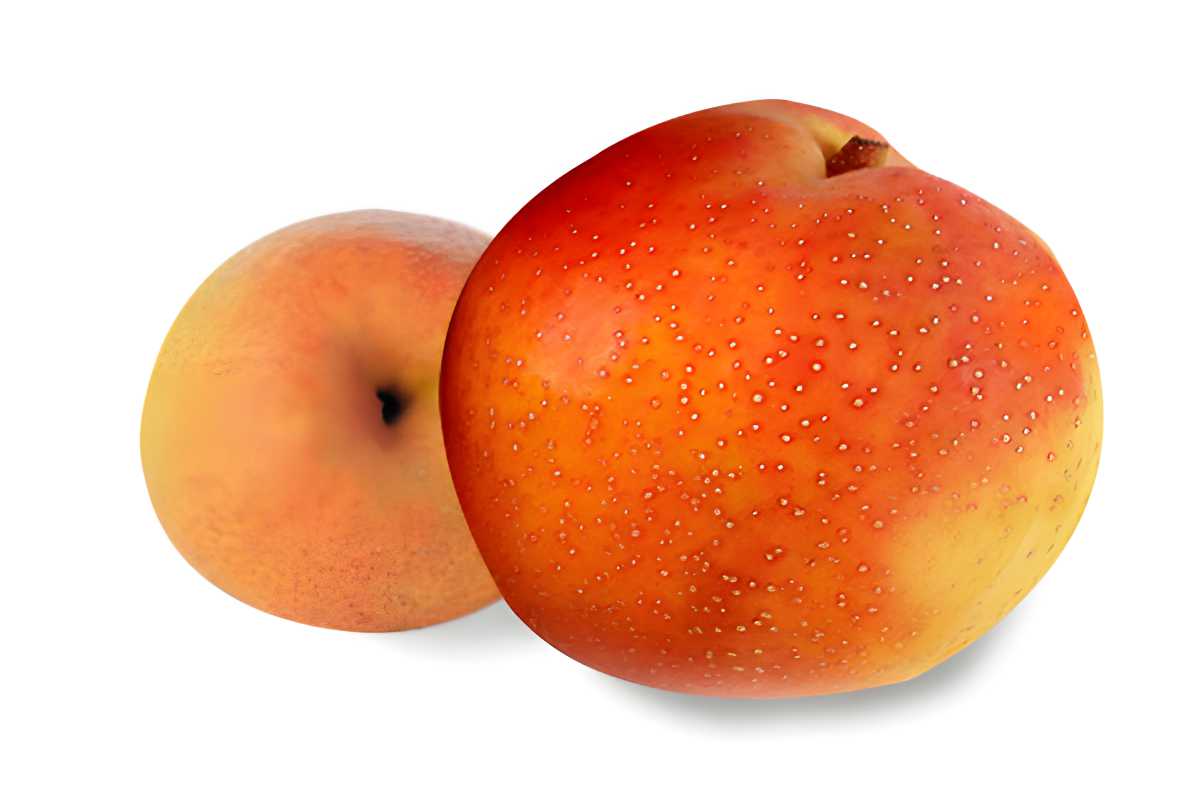
The Reddy Robin Asian Pear is a small, round fruit with a sweet flavor and crisp texture. This variety has red skin and juicy white flesh. It is often enjoyed fresh but can also be used in culinary applications.
Highlights:
- Origin: East Asia.
- Skin: Red.
- Flesh: Juicy, white.
- Flavor: Sweet.
- Harvest: Late summer.
- Storage: Several months.
Additional Information: Reddy Robin pears are known for their delightful sweetness and are a favorite for fresh eating. They can also be used in salads, desserts, and garnish. The trees are relatively easy to grow and produce a generous amount of fruit.
Red Ya Pear
The Red Ya Pear is a type of Chinese pear with a sweet-tart flavor and crisp texture. This pear has a distinct red skin and is often referred to as a sand pear. The flesh is juicy and slightly grainy, making it a refreshing snack.
Highlights:
- Origin: China.
- Skin: Red.
- Flesh: Juicy, slightly grainy.
- Flavor: Sweet-tart.
- Harvest: Late summer.
- Storage: Several months.
Additional Information: Red Ya Pears are often enjoyed fresh, but they can also be used in various culinary applications, such as baking and poaching. They are high in vitamins and minerals, including vitamin C and potassium, making them a nutritious addition to any diet.
Seuri Asian Pear
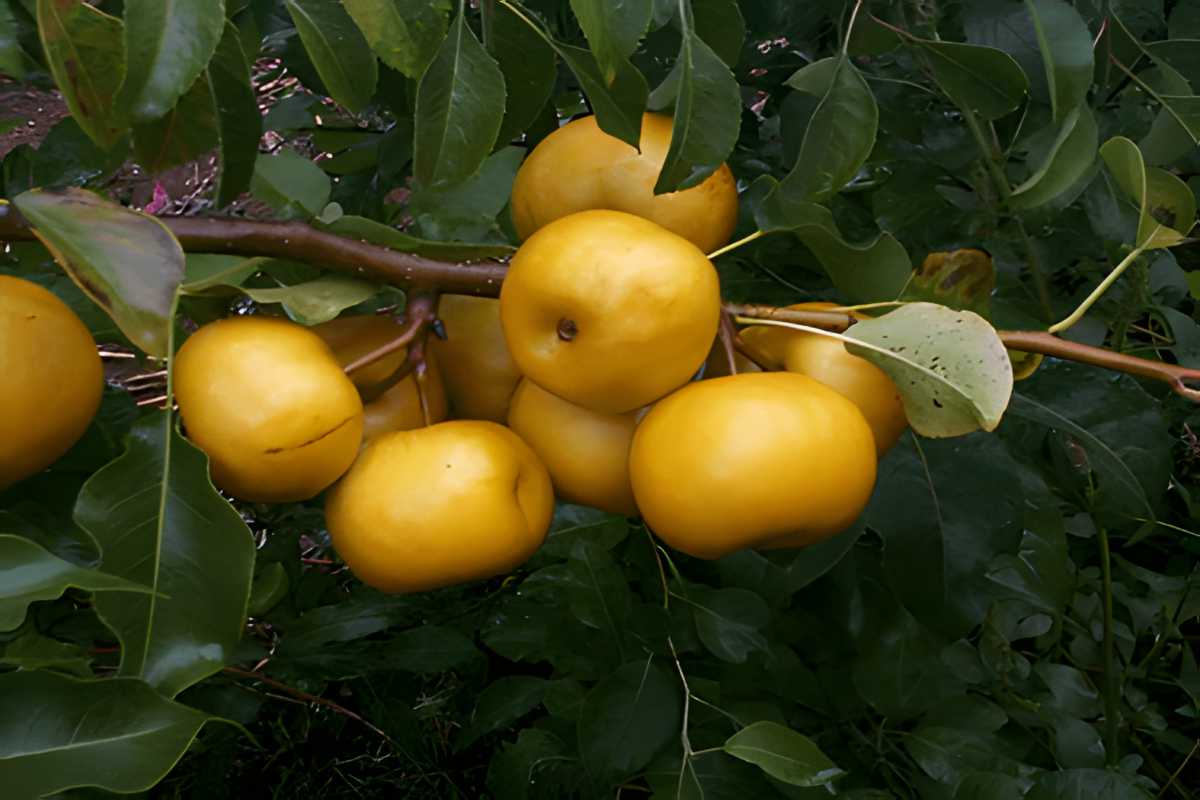
The Seuri Asian Pear is a small, round fruit with a sweet flavor and crisp texture. This variety has yellow-green skin and juicy white flesh. It is often enjoyed fresh but can also be used in culinary applications.
Highlights:
- Origin: East Asia.
- Skin: Yellow-green.
- Flesh: Juicy, white.
- Flavor: Sweet.
- Harvest: Mid-August.
- Storage: Up to three months.
Additional Information: Seuri Asian Pears are known for their delightful sweetness and are a favorite for fresh eating. They can also be used in salads, desserts, and garnish. The trees are relatively easy to grow and produce a generous amount of fruit.
Shinseiki Asian Pear

The Shinseiki Asian Pear is a Japanese variety known for its sweet flavor and crisp texture. This round pear has a light greenish-yellow skin and juicy white flesh. It is a popular fruit in Japan and is often enjoyed fresh.
Highlights:
- Origin: Japan.
- Skin: Light greenish-yellow.
- Flesh: Juicy, white.
- Flavor: Sweet.
- Harvest: Early fall.
- Storage: Several months.
Additional Information: Shinseiki pears are perfect for fresh eating due to their juicy and sweet nature. They can also be used in various culinary applications, such as salads and desserts. The trees are known for their reliability and high yield.
Shinsui Asian Pear
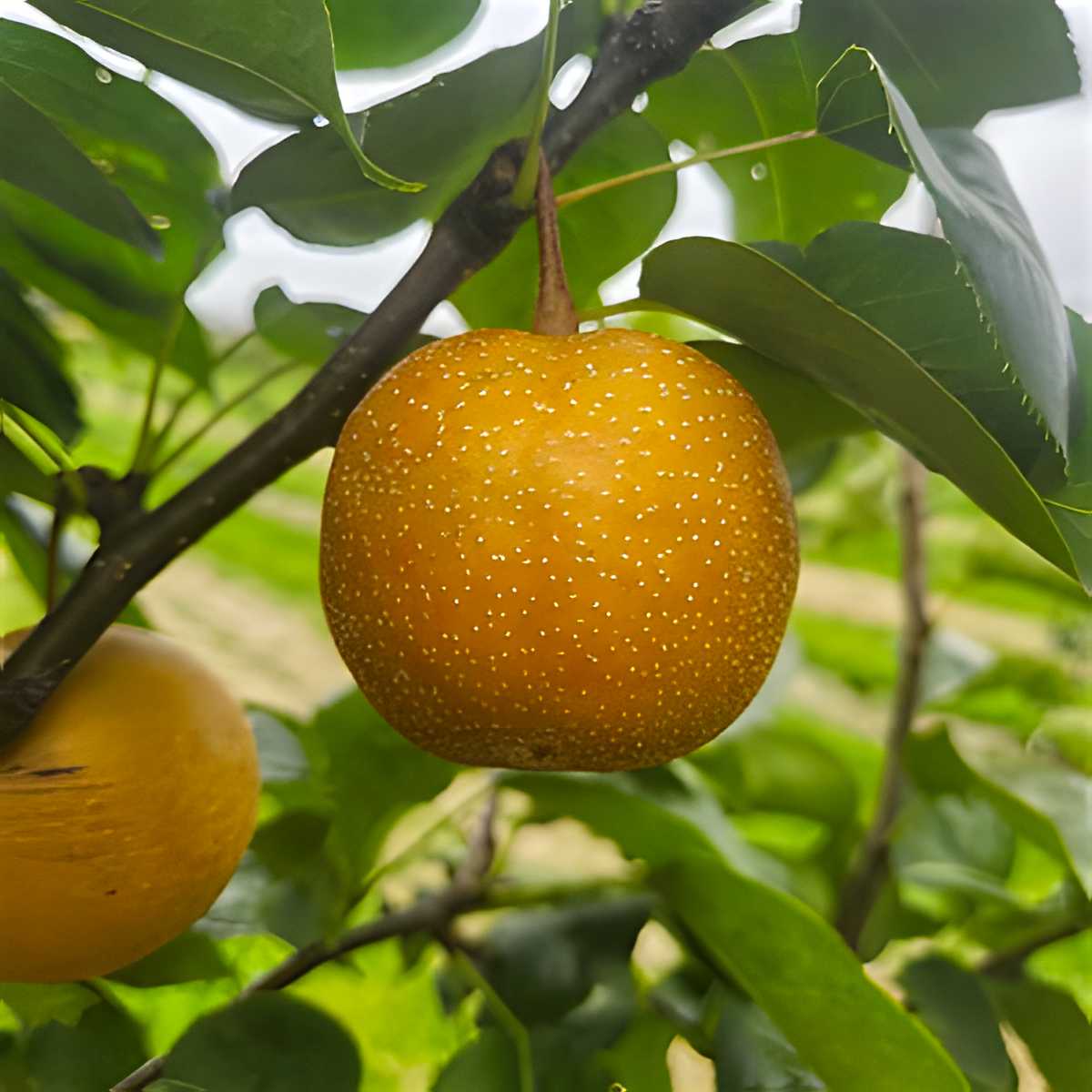
The Shinsui Asian Pear is a Japanese variety known for its sweet flavor and crisp texture. This small, round pear has yellow-green skin and juicy white flesh. It is a popular fruit in Japan and is often enjoyed fresh.
Highlights:
- Origin: Japan.
- Skin: Yellow-green.
- Flesh: Juicy, white.
- Flavor: Sweet.
- Harvest: Mid-August.
- Storage: Up to three months.
Additional Information: Shinsui pears are highly valued for their sweet taste and crisp texture. They are excellent for fresh consumption and can be used in various recipes. The trees are hardy and produce a generous amount of fruit each season.
Tsu Li Chinese Pear
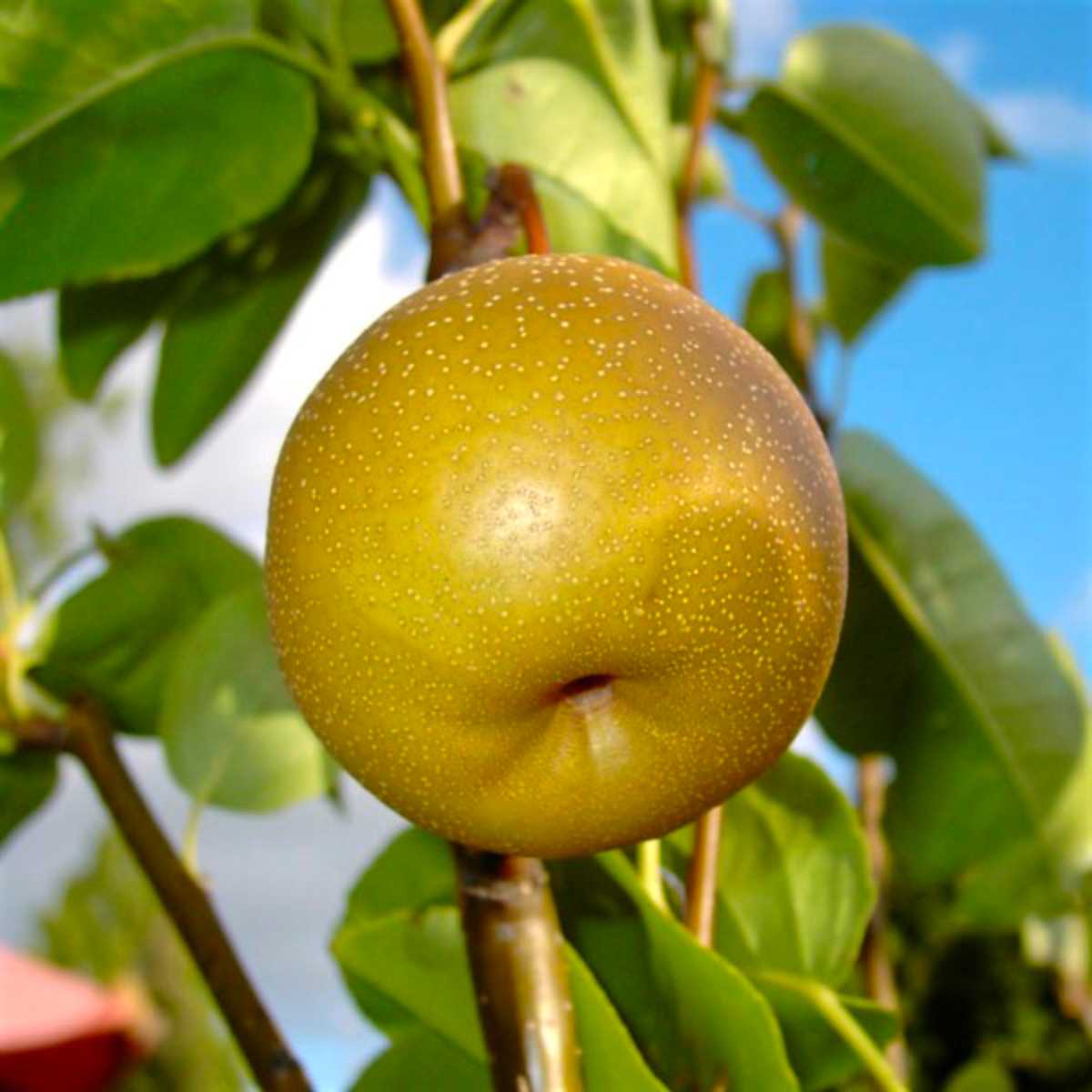
The Tsu Li Asian Pear is a Chinese pear known for its sweet flavor and crisp texture. This large, round pear has yellow-green skin and juicy white flesh. It is a popular fruit in China and is often enjoyed fresh.
Highlights:
- Origin: China.
- Skin: Yellow-green.
- Flesh: Juicy, white.
- Flavor: Sweet.
- Harvest: Early fall.
- Storage: Several months.
Additional Information: Tsu Li pears are ideal for fresh eating due to their sweet and juicy nature. They can also be used in various culinary applications, such as salads and desserts. The trees are easy to grow and produce abundant fruit.
White Ya Pear
The White Ya Pear is a type of Chinese pear known for its sweet flavor and crisp texture. This round pear has light yellow skin and juicy white flesh. It is a popular fruit in China and is often enjoyed fresh.
Highlights:
- Origin: China.
- Skin: Light yellow.
- Flesh: Juicy, white.
- Flavor: Sweet.
- Harvest: Late summer.
- Storage: Several months.
Additional Information: White Ya Pears are often enjoyed fresh, but they can also be used in various culinary applications, such as baking and poaching. They are high in vitamins and minerals, including vitamin C and potassium, making them a nutritious addition to any diet.
Yellow Ya Pear

The Yellow Ya Pear is a type of Chinese pear known for its sweet flavor and crisp texture. This round pear has yellow skin and juicy white flesh. It is a popular fruit in China and is often enjoyed fresh.
Highlights:
- Origin: China.
- Skin: Yellow.
- Flesh: Juicy, white.
- Flavor: Sweet.
- Harvest: Late summer.
- Storage: Several months.
Additional Information: Yellow Ya Pears are often enjoyed fresh, but they can also be used in various culinary applications, such as baking and poaching. They are high in vitamins and minerals, including vitamin C and potassium, making them a nutritious addition to any diet.
Yoinashi Asian Pear

The Yoinashi Asian Pear is a Japanese variety known for its sweet flavor and crisp texture. This round pear has smooth, yellow skin and juicy white flesh. It is a popular fruit in Japan and is often enjoyed fresh.
Highlights:
- Origin: Japan.
- Skin: Smooth, yellow.
- Flesh: Juicy, white.
- Flavor: Sweet.
- Harvest: Mid-August.
- Storage: Up to three months.
Additional Information: Yoinashi pears are highly valued for their sweet taste and crisp texture. They are excellent for fresh consumption and can be used in various recipes. The trees are hardy and produce a generous amount of fruit each season.
What Should I Look For When Buying Them?
When buying Asian pears, you should look for firm fruits with smooth skin. The skin color can vary, but most are light brown or yellow.
What Can I Do With Lots Of Asian Pears?
If you have a lot of Asian pears, you might want to think about cooking with them. Many delicious recipes include this fruit. Here are a few ideas:
- Apple Pear Salad: This salad is a great way to use up both apples and pears. The salad includes greens, nuts, and a delicious vinaigrette.
- Asian Pear Smoothie: This smoothie is made with yogurt, banana, and honey. It's a great way to start your day with fiber and protein.
- Pear Tart: This tart is made with puff pastry, sugar, eggs, and butter. The pears are cooked in cinnamon syrup and then layered on top of the tart.
- Poached Pears: This recipe is simple but elegant. The pears are cooked in a poaching liquid made with sugar, wine, and spices.
There are many other recipes that you can try using Asian pears. If you have some ideas, be sure to share them in the comments section.
Which Asian Pear Is The Sweetest?
The Korean Asian pear is the sweetest type of pear. These pears are large, round, and have light brown skin. The flesh of the pear is white and crisp and is often used in desserts because of its sweetness.
Storage
The quality of the fruit deteriorates after a few months, and it can be stored for up to six months in good storage conditions. Pears are best eaten within three weeks of purchase.
Pears are perishable fruit and should be stored in the refrigerator or at room temperature. The best storage is in their original packaging, keeping them fresh for up to 6 weeks.
How to store: Store at room temperature (20°C/68°F) with plenty of air circulation. If you have purchased pears that are still firm, they should not be refrigerated.
Posts To Visit
48 Types of Plums | A-to-Z | Photos
Plumcot vs Pluots 🍑 Hybrid Fruits Explained





Leave a Reply